Peter the Great – History, Major Reforms & Notable Accomplishments
Why was Peter the Great “great”? Was it because of the host of reforms he implemented in the Russian government and military systems? Or was it because he turned Russia into an imperial power to be reckoned with? One thing is for sure: Peter the Great is a name that cannot be ignored when talking about the history of Russia.
Let’s delve into the life, major facts and notable achievements of Peter the Great, one of the most influential Russian tsars of all time.
Peter the Great: Fast Facts
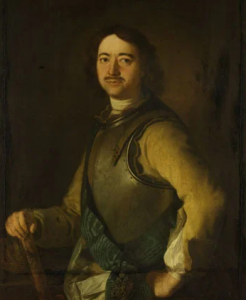
Peter the Great accomplishments
Born: Pyotr Alekseyevich
Also known as: Pyotr Veliky
Date of birth: June 9, 1672
Place of birth: Moscow, Russia
Died: February 8, 1725
Place of death: St. Petersburg
Aged: 52
Parents: Tsar Alexis and Natalya Kirillovna Naryshkina
Siblings: Ivan V (1682-1696), Fyodor III (1661-1682)
Wife: Eudoxia (1689-1698), Catherine I (formerly Martha Skavronskaya) (1712-1725)
Children: Alexie, Elizabeth
Tsar of Russia: 1682-1725
Predecessor: Fyodor III
Emperor of Russia: 1721-1725
Successor: Catherine I (reign – 1725-1727)
Dynasty: Romanov dynasty
Most known for: modernizing Russia, founder of St. Petersburg
How Peter the Great rose to the throne
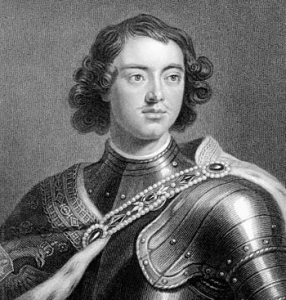
Peter the Great become sole tsar of Russia in 1696 following the death of his half-brother Ivan V
Peter’s father, Tsar Alexis, passed away on February 8, 1676. Peter was just 4 years old at the time of his father’s death. His older half-brother Fyodor was crowned Fyodor III, tsar of Russia. After ruling for six years, Fyodor III died without an heir. The crown then passed on to Peter and his half-brother Ivan. Together, the two became co-tsars of Russia.
This arrangement came as a result of a compromise deal between the Miloslavskys, relatives of Ivan, and the Naryshkins, relatives of Peter’s mother. The two factions engaged in a bitter power struggle, which even saw the murder of many allies of Peter, including his benefactor Artamon Matveyev (1625-1682).

Peter I, later known as Peter the Great, was a joint Tsar of Russia with his older half-brother Ivan. The two siblings co-ruled from 1682 to 1696, when Ivan passed away and Peter became the sole monarch of Russia. Image: The Tsardom of Russia around 1700
Supported by the Boyar Duma (a council of Russian nobles), the Naryshkins argued that Ivan, like his deceased elder brother Fyodor III, was week and unhealthy. They wanted the 10-year-old Peter, who was healthier and clever, to rule. In the end, it was agreed that both Ivan and Peter jointly rule the Tsardom of Russia. To ensure the co-tsars ruled effectively, Sophia, the 25-year-old elder sister of Ivan, was appointed regent during the minority of the co-tsars.
After political strife broke out in 1689, Peter found himself in a stronger position. He then forced Sophia to commit herself into a convent and become a nun. As Ivan was frail and feebleminded, real power resided firmly in the hands of Peter. In 1696, the year an heirless Ivan died, Peter became the sole tsar of Russia.
Peter the Great’s exposure to Western education
Kind courtesy to the education and upbringing that his mother, Natalya, received (from Russian diplomat and statesman Artamon Sergeyevich Matveyev), Peter was exposed to a lot of Western ideas. Growing up in the village of Preobrazhenskoye with his mother, Peter had great admiration for military games and outdoor activities. He also had the opportunity to interact with boys of his age that lived in a Germany colony near the village. In his youth, he is said to have become friends with the likes of Franz Lefort and Patrick Gordon, both of who went on to be close military generals of Peter during his reign.
As co-tsar with his brother Ivan, Peter was sidelined a bit by his half-older sister Sophia, who was regent of Russia. As a result, Peter did not get the typical education Russian tsars and tsarevichs received. Instead, he grew up in a western-type environment, learning from great scholars like Nikita Zotov. Peter also got to bask a lot in outdoor activities. This period had a long-lasting impact on him as he would go on to introduce a host of Western ideologies and systems in Russia.
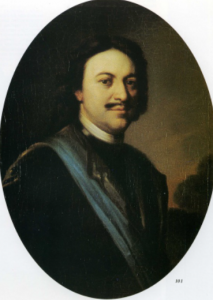
In the later part of the 17th century, Peter travelled through many western European countries, where learnt a great deal of things which shaped his reformation of Russian military, economy and culture. Image: Peter I, by Dutch painter Carel de Moor, 1717
Peter I of Russia accuses his son tsesarevich Alexis of treason and plotting to overthrow him
The oldest son of Peter I, Alexis was accused of not supporting fully his father’s war efforts and reforms. As a result, Alexis was given two options – either support the tsar’s reforms or renounce his right to the throne and become a monk.
In 1716, Alexis fled Russia after he refused to fight beside his father against the Danes. The young tsarevich fled to Vienna and took refuge under then-Holy Roman emperor Charles VI. Peter was able to convince Alexis to return to Russia; however, the tsar soon accused Alexis of plotting to overthrow him. Alexis was tortured and later gave a confession to the charges against him before the Senate. He was later tried and sentenced to death for treason. As he waited for his execution, he succumbed to an illness and died in July, 1718.
Alexis’s mother, former tsarina Eudoxia, was placed in confinement in a fortress in St. Petersburg. She was not released until her grandson Peter II ascended the throne in 1727.
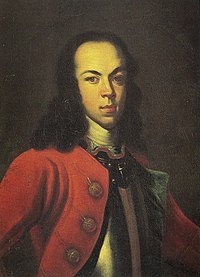
He killed his own son, Grand Duke Alexei Petrovich of Russia (28 February 1690 – 7 July 1718) , by torturing him to death. Alexei was accused in 1716 of conspiring against Peter I. Although the Russian Tsarevich confessed to the allegations, there was no proof found of his plans to topple Peter the Great.. Image: Grand Duke Alexei Petrovich of Russia – Son of Tsar Peter I and his first wife, Eudoxia Lopukhina
10 Notable Achievements of Peter the Great
In 1723, the western and southern shores of the Caspian were handed to Peter by the Persians. Peter had come to the aid of the Persians during an invasion by the Ottoman Empire. Those territories were given to Peter in exchange for the aid given to the Persians.
He disguised himself as Pyotr Mikhaylov and hopped on an expedition through Europe in order to acquire further knowledge about how European nations organized their military, economic and cultural systems. It must be noted that Peter the Great, upon his ascension to the throne, was displeased by Russia lagging behind the rest of Europe when it came to many things, particularly technology and culture. Peter embarked upon this trip through Europe to learn and later adapt Western systems into Russia.
The 18-month trip, which was called the Grand Embassy to western Europe, also saw Peter the Great and his large Russian delegation try very hard to secure an alliance with a number European nations. He met many European monarchs, including King William III of England, Augustus II the Strong, King of Poland, and Leopold I, Holy Roman Emperor. His goal was to build a strong anti-Turkey alliance in Europe. To his disappointment the European monarchs were unwilling to go to war with the Ottomans.
He effectively suppressed a rebellion that broke out in Moscow in 1698. The rebellion was orchestrated by the streltsy, elite members of the sovereign bodyguard that wielded enormous influence in Russia. After crushing the revolt, the streltsy were disbanded and many of them were incorporated into Russia’s regular army.
Towards the end of the 17th century, Peter began turning his attention away from the Black Sea towards areas in the Baltic. However, he was met by strong resistance from the Swedes, who had taken up positions in Ingria, Estonia, and Karelia. The Swedes, who were under the leadership of the young King Charles XII, had become a stumbling block to his quest to access the Baltic coast. In the ensuing war with the Swedish Empire, Peter struck an alliance with Denmark-Norway and Saxony. In spite of the early losses he suffered in the Second Northern War (1700-21), Peter soldiered on and helped himself to some famous battle wins against Sweden, including the battle at Poltava in 1709, when he defeated Charles XII of Sweden. In the end, Peter secured a famous victory over Sweden. He then seized from the Swedish Empire what is now northern Latvia and southern Estonia.
As part of his celebration of over the Swedes, he was given a host of titles, most famous among them the title of emperor. Peter, thus, became imperator of all of Russia.
Regarding the army, Peter’s reforms in the military allowed Russia to acquire modern equipment. He established a regular army. It also meant that he got rid of the untrustworthy and often rebellious streltsy. Many peasants and people from the towns were conscripted into the army. Also military schools were built to build Russia’s military education capacity. This meant that they did not have to over rely on foreign expats in this sector.
A conscientious and determined man, he demanded his officials carried out their duties to the best of their abilities. He also showed a lot of shrewd wisdom and industrious intellect. He entreated his military to promote based on years of service that carried real value.
In 1703, he began constructing an entirely new city called St. Petersburg. Construction work, which was supervised by German and Italian engineers and architects, was completed in 1712. The use of western builders in building Saint Petersburg was in line with his goal of westernizing the whole of Russia. The following year, the capital city of the Tsardom of Russia and the Russian Empire was then transferred from Moscow to St. Petersburg. It would remain like that until 1917, when the October Revolution broke out and the Bolsheviks toppled the monarch Emperor Nicholas II. The Revolutionaries moved the capital back to Moscow. Today, Saint Petersburg, which is usually called the “Cultural Capital of Russia,” receives million of tourists every year.
During the reign of Peter the Great, the poor urban workers and peasant farmers suffered the most as much of the gains secured by the tsar came off the backs of those people. This explains why Peter had to deal with a number of revolts, the first major one taking place in Astrakhan in 1705. Typical of any monarch at the time, Peter responded to the revolts with a strong hand. The rich landowners and ruling class got richer during Peter’s reign. The middle class (i.e. the nascent bourgeoisie) also benefited a lot under Peter.
Peter and the Bulavin Rebellion
The Bulavin Rebellion (1707-1708), which took place in Don Cossack Host, was perhaps the fiercest rebellion that Peter had to contend with during his reign. The rebellion pitted the Don Cossacks, an autonomous democratic region, against the Tsardom of Russia. The Cossacks were led by the democratically elected Ataman called Kondraty Bulavin. Tensions broke out when the Don area began taking serf refugees that were fleeing Russia’s monarch and autocracy. Bulavin incited the people to rebel against Tsar Peter as the rebels claimed that tsar was an Antichrist that wreaked havoc on the people. Peter responded swiftly and brutally crushed the rebellion. The rebellion ended when Cossack died on July 7, 1708. The rebel leader was killed by his own followers.
Reforms by Peter the Great
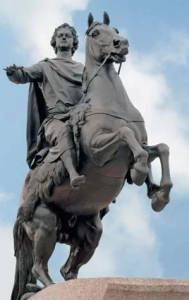
Peter the Great is generally regarded as one of Russia’s most renowned reformers and statesmen. His reign helped transform the Russian economy and culture. Image: Equestrian statue of Peter the Great in St. Petersburg
Compared to its European counterparts, the Russia that Peter I inherited was backward and many years behind in terms of technology, education, government, culture, and military.
Right of the get go, Peter the Great was very committed to turning around the fortunes of Russia. He was fully aware that the Russian economy, military, and culture lagged behind many Western nations. As a result, he worked very hard to introduce reforms that ended up making Russian more modern.
He reasoned that a modernized Russia would help in its war efforts on the continent, especially against the Ottomans. He focused on boosting Russia’s industrial capacity.
Based on the knowledge he acquired while working as a shipbuilder in Europe, he spent considerable resources overhauling Russia’s navy. To do this, metallurgy technologies had to be adapted from Europe. He also solicited the help of experts from Europe. The Russian army and navy all witnessed considerable improvements during Peter the Great’s reign. The structures that he laid meant that Russia needed less than a few decades to become the leader in metallurgy in Europe.
He also sent a delegation to Malta to study the training and abilities of the Knights of Malta and their navy fleet.
Beginning January 1st, 1700, Russian emperor Peter made the Russian calendar conform to the calendar Europeans used. Prior to that the year began on September in the Russian calendar. He adopted the Julian calendar for the days of the month.
His westernization efforts of Russia was far reaching to the extent that he ordered the cutting of beards short. He also entreated his boyars and state officials to wear Western dress. Those that did not comply were slapped with fines.
As part of his grand effort to westernize Russia, he entreated his family members to marry into European royal families. Prior to Peter, this practice was not encouraged. Peter even helped in arranging the marriage of his niece Anna Ivanovna to Frederick William, Duke of Courland.
He did everything in his power to bring the Russian Orthodox Church under his control. He got rid of the Patriarchate of Moscow. In the body’s place he promoted the Holy Synod to act as the patriarch’s head. Members of the Holy Synod were expected to remain loyal to Peter Great.
As a result of increased industrial output, Russia’s trading fortunes got better and better during Peter’s reign. However, he was criticized for a controversial agreement with industrialists that allowed industrialist to purchase peasant serfs for labor.
When it came to the economy, Peter fought very hard to end the influence of the boyars, influential land owners and aristocrats. He also clipped the influence of the clergy and the Russian Orthodox Church.
He introduced reforms in the administration and governance of urban areas. Those reforms helped to promote artisanship and small scale businesses and production. Russia’s industrial output grew and more people were employed in those factories. Also, no longer were artisans and merchants subjected to the tyrannical control of military governors in the provinces. The artisans were allowed to elect representatives, who were subordinated to the Moscow municipality.
His reforms in governance witnessed the division of Russia into eight governments (guberny), with each tsar-appointed governor in charge of a regions. The guberny was further divided into 50 provinces. And under those provinces were districts. Those reforms allowed Russia to do away with the vestiges of the medieval governance style and adopt a more effective aristocratic system of governance. The boyar council was eliminated. He then established the Senate of ten members to be in charge of all organs of the state. The body was created to act as his “the sovereign’s eye” while he was away on a military campaign against the Swedish Empire.
How did Peter the Great die?
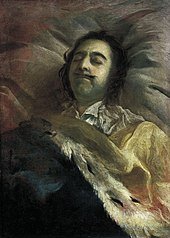
Peter the Great on his deathbed, by Russian painter Nikitin
After ruling as the sole tsar of Russia for almost 30 years, Peter died in January 1725, aged 52. The cause of death was said to be a urinary-tract infection. He also had gangrene growing around his bladder.
He was interred in Saints Peter and Paul Cathedral in Saint Petersburg, Russia.
It’s said his illness became worse after he dived into the freezing water in the Gulf of Finland in order to save the lives of soldiers that were drowning.
Who succeeded Peter the Great?
After his death in 1725, he was succeeded to the throne by his second wife, Empress-consort Catherine. And upon Catherine I’s death in 1727, Peter’s grandson Peter II was crowned emperor of Russia.
All his male children died before him. He was survived by only three daughters Natalia Petrovna, Anna Petrovna, and Yelisaveta Petrovna (later Empress Elizabeth). The latter succeeded her mother Catherine I to the throne as Russian Empress.
Other interesting facts about Peter the Great
Peter the Great was born to Tsar Alexis and his second wife Natalya Kirillovna Naryshkina. What this means is that Peter had half-siblings, most famous among them his half-brothers Fyodor III (reign – 1676-1682) and Ivan V (1682-1696). Peter jointly ruled with the latter for some time.
He was named after Peter the Apostle (also known as Saint Peter). One of the 12 Apostles of Jesus Christ, Saint Peter is generally regarded as the first bishop of Rome or pope.
Compared to his half-siblings who were usually ill and weak, Peter was described as very strong and healthy in his childhood.
At the time that Peter succeeded to the Russian throne, the country was decades behind many Western countries in terms of technology, science, governance, education and even culture. Peter set out to change this by introducing sweeping reforms to modernize Russia and make it major power in the world. He introduced changes that augured very well for the Russia’s economy, military, government and foreign policy. Although he carried out those reforms in a brutal way.
Due to his overemphasis on Western ideas and culture, his critics have sometimes called him “Destroyer of Russian Culture” or the “scourge of the common man”.
It’s been stated that Soviet dictator Joseph Stalin took a page from Peter the Great’s reform model and unleashed a brutal transformation of Russia in the first half of the 20th century.
His first marriage was to a woman called Eudoxia Lopukhina (1669-1731) in 1689. Due to incompatible personality traits, the marriage ended with Peter sending Eudoxia to a monastery in 1698. By Eudoxia, Peter fathered a son called tsesarevich Alexie, eldest son and heir apparent.
His second marriage was to Catherine I (born – Martha Skavronskaya), a Baltic peasant woman who was brought to Russia during Russia’s war against Sweden in the Second Northern War (1700-1721). Peter and Catherine tied the knot in 1712, and in 1724, Catherine was crowned empress-consort Catherine I. Following the death of Peter the Great in 1725, Catherine was crowned Catherine I, empress of Russia. She reigned from 1725 to 1727.
His time in Europe saw him disguise himself as a carpenter and a shipbuilder. He even worked in the Dutch East India Company and the Royal Navy’s dockyard in Deptford, England. He also came back with a stuffed crocodile.
Peter the Great stood at a height of almost two meters (around 6 ft 7 in). He did not however have a bulky and physically imposing stature; instead he had very small hands and feet for someone that tall.
He was a monarch of simple lifestyle. He preferred drinking beer from a mug. He wore simple clothes and even sometimes worn-out shoes and hats.
Russo-Turkish War in 1710
In his early years as sole ruler of Russia, Peter crafted a strong foreign policy that enabled him secure access to key strategic areas in the Black Sea and the Caspian Sea. He did this by embarking on military campaigns in 1695 and 1696. The campaign allowed him to successfully annex Azov, a town on the left bank of the Don River, from the Crimean Tatar, who were at the time vassals of the Ottoman Empire. However, he later lost Azov after he was humiliated by the Turkish during the Russo-Turkish War (1710-13). The Peace of Adrianople in 1713, which ended the hostilities between the Russians and the Turks, did not demand too many concessions from Peter.
Other notable achievements
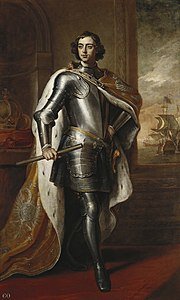
As part of his effort to modernize his regime and assert the monarch’s primacy over the Orthodox Church, Tsar Peter I crowned himself “emperor of all Russia”. Portrait of Peter I by Godfrey Kneller, 1698. This portrait was Peter’s gift to the King of England.
Peter the Great undoubtedly set Russia on a path of becoming a major European power to be reckoned with. He was an influential Russian ruler and one of the most revered reformers in the history of Russia. However, some Russian nationalists sometimes accuse him of replacing some parts of Russian culture with western culture.
Peter the Great introduced a number of reforms in the Russian Orthodox Church of the country. He allowed musical instruments, theatrical plays, and portraits in the church – things that were previously banned by the church.
Peter also introduced changes in the Old Church Slavonic alphabet. A secular script was adopted.
Speaking about secularism, Peter is known for making Russian education system more secular. There was greater oversight by the state. Russian students were also encouraged to study abroad so that they could return to Russia and contribute to the development of the nation.
It was during his reign the Russian Academy of Sciences was instituted.
























